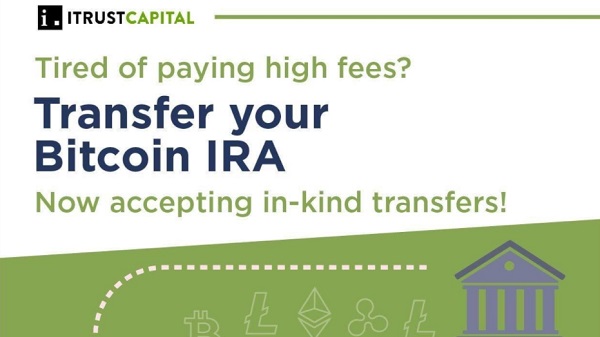
Bitcoin, the world’s most well-known cryptocurrency, has been a hot topic in recent years for both its potential as an investment opportunity and its environmental impact. Critics contend that Bitcoin’s proof of work algorithm, the process that miners use to verify transactions on the blockchain, is outlandishly energy-intensive and contributes significantly to carbon emissions.
Conversely, proof of stake is a less energy-intensive alternative algorithm that is gaining popularity as a potential solution to Bitcoin’s energy problem.
What is Proof of Work and Proof of Stake?
Proof of work is the current algorithm used by Bitcoin and many other cryptocurrencies to verify transactions. It involves miners using their computational power to solve complex mathematical equations, which in turn verifies transactions on the blockchain. This process is resource-intensive, consuming a significant amount of energy and leading to a high carbon footprint.
Proof of stake is an alternative algorithm used by some cryptocurrencies, including Ethereum and Cardano. Instead of miners solving complex equations, the blockchain network uses validators who are chosen based on the amount of cryptocurrency they hold.
Validators are responsible for verifying transactions, and the rewards they receive are proportional to the amount of cryptocurrency they hold. This process is significantly less energy-intensive than proof of work, and hence more eco-friendly.
Ethereum’s Move to Proof of Stake
In September 2022, Ethereum, the second-largest cryptocurrency by market capitalization, successfully transitioned from proof of work to proof of stake, a move that had been years in the making. The transition is expected to eventually lead to improved network security and scalability, as well as a more energy-efficient system. The move made Ethereum the largest proof of stake network.
Can Bitcoin Follow Suit?
With the success of Ethereum’s transition to proof of stake, many in the cryptocurrency community have questioned whether Bitcoin could make a similar move. While proof of stake has the potential to reduce energy consumption and improve scalability, it would require significant changes to Bitcoin’s infrastructure, and there may be concerns about its impact on decentralization and security.
Benefits of Proof of Stake for Bitcoin
One of the main benefits of proof of stake for Bitcoin is its potential to reduce energy consumption. With proof of stake, validators are chosen based on the amount of cryptocurrency they hold, which means that they don’t need to compete with each other to solve complex equations.
This process is significantly less energy-intensive than proof of work, making it a more environmentally friendly option.
Another benefit of proof of stake for Bitcoin is its potential to improve scalability. The current proof of work system used by Bitcoin has a limited capacity for transactions, which can lead to slow processing times and high transaction fees. The move to proof of stake could potentially increase the capacity for transactions, making the system more scalable.
Beyond energy efficiency and scalability, proof of stake can also improve security. Under proof of work, miners compete with each other to validate transactions, which can make the system vulnerable to 51% attacks. In contrast, proof of stake relies on validators who hold a significant amount of cryptocurrency, leading to less vulnerability to these types of attacks.
Challenges of Implementing Proof of Stake for Bitcoin
While proof of stake may be a more energy-efficient and scalable option for Bitcoin, there are also concerns about its impact on decentralization and security. Under proof of work, miners compete with each other to validate transactions, which helps ensure the decentralization of the system.
In contrast, proof of stake relies on validators who hold a significant amount of cryptocurrency, leading to concerns that it could lead to centralization and potentially compromise the security of the network.
Additionally, transitioning to proof of stake would require significant changes to Bitcoin’s infrastructure, which could be challenging to implement. There is also the question of whether the Bitcoin community is willing to make such a change, given the level of investment that has gone into the current proof of work system.
While there are some proposals for hybrid systems that combine proof of work and proof of stake to balance energy consumption and decentralization, it remains to be seen whether these will gain traction among the Bitcoin community.
Other Cryptocurrencies Using Proof of Stake
While Ethereum is the largest cryptocurrency to use proof of stake, it is not the only one. Other examples include Cardano, Polkadot, and Solana, all of which use proof of stake to verify transactions. These cryptocurrencies have experienced significant growth in recent years, suggesting that proof of stake is a viable alternative to proof of work.
Expert Insights on Proof of Stake for Bitcoin
Experts in the cryptocurrency and blockchain industries have weighed in on the potential for Bitcoin to transition to proof of stake. Some are optimistic about the potential for proof of stake to address Bitcoin’s energy problem and improve scalability. Others caution that the transition to proof of stake would be challenging and could have unintended consequences on decentralization and security.
Concerns with Proof of Stake Consensus
Proof of stake has benefits over proof of work but also has concerns associated with this consensus algorithm.
One of the primary issues with this consensus algorithm is the potential for centralization. Unlike proof of work, proof of stake relies on validators holding significant cryptocurrency. Validators holding significant amounts of cryptocurrency are responsible for verifying transactions in proof of stake systems. This raises concerns of centralization and security vulnerability.
Another concern with proof of stake is the potential for security vulnerabilities. Proof of stake is more secure than proof of work. Yet, still vulnerable to attacks such as fake transactions, which validators with a large stake in the network could manipulate.
The Validators
Validators holding more cryptocurrency have a higher chance of verifying transactions, leading to a concentration of wealth and potential centralization. This raises concerns about an unfair distribution of wealth and limited network accessibility for other participants.It is noteworthy that 39% of Ethereum supply is held by “whales”. Individuals or entities that own a significant amount of a particular cryptocurrency.
Additionally, the initial distribution of cryptocurrency in a proof of stake system is a related concern. Validators who hold a significant amount of cryptocurrency at the outset have a significant advantage over other participants. Potentially leading to an uneven distribution of wealth and power. This could have long-term implications for the accessibility and decentralization of the network.
Proof-of-Stake Debate Continues
Bitcoin’s energy problem has been a source of debate for years. With critics arguing that the proof of work algorithm is energy-intensive and contributes to carbon emissions. Ethereum’s successful transition to proof of stake has sparked discussions about whether Bitcoin could make a similar move.
While proof of stake has the potential to reduce energy consumption and improve scalability. Yet, it would require significant changes to Bitcoin’s infrastructure. And there may be concerns about its impact on decentralization and security.
Proof of stake has been successful for other cryptocurrencies. Indicating that it may be a viable alternative for Bitcoin in the future. However, any transition to proof of stake would require consideration to maintain the security and decentralization of the Bitcoin network.
Disclaimer
All the information contained on our website is published in good faith and for general information purposes only. Any action the reader takes upon the information found on our website is strictly at their own risk.




Be the first to comment